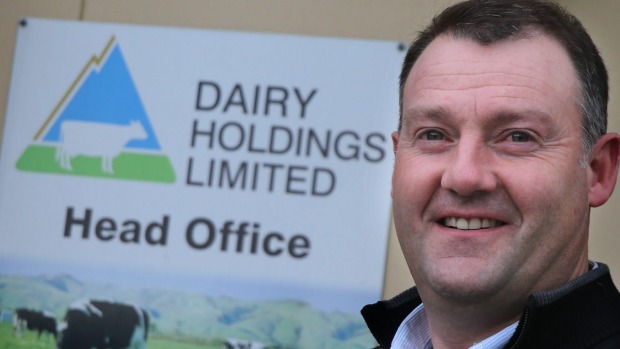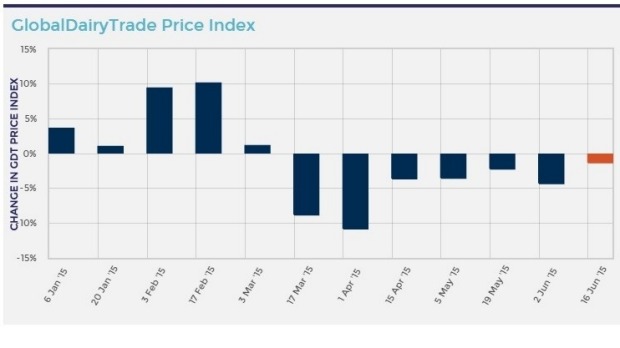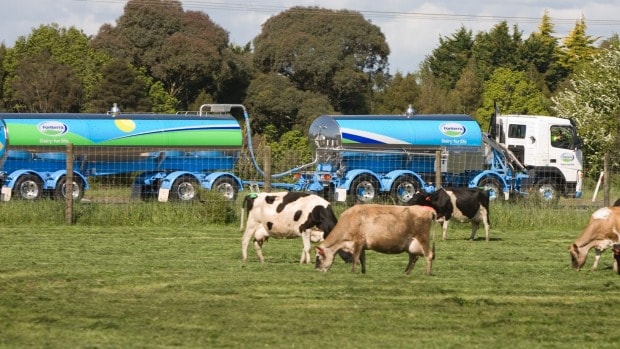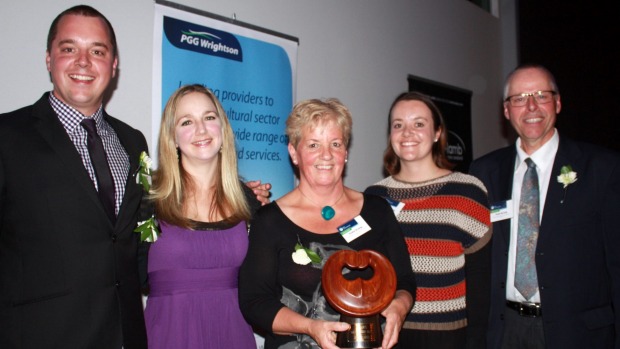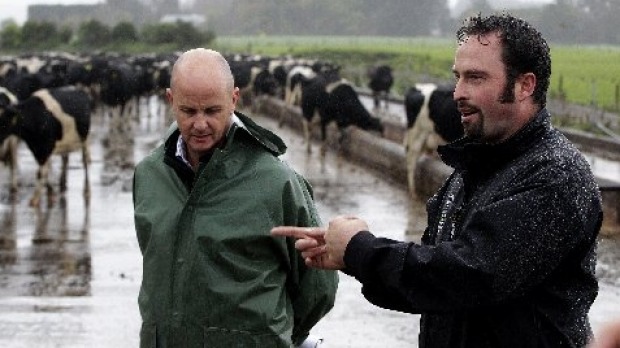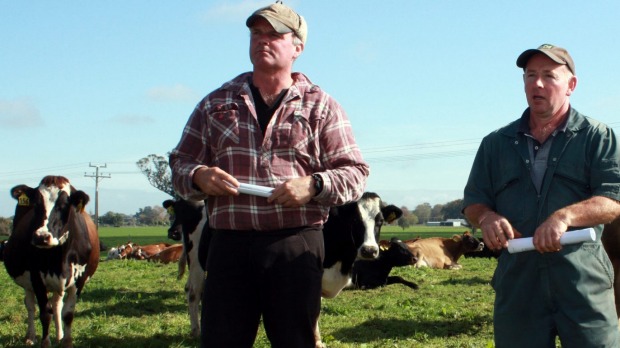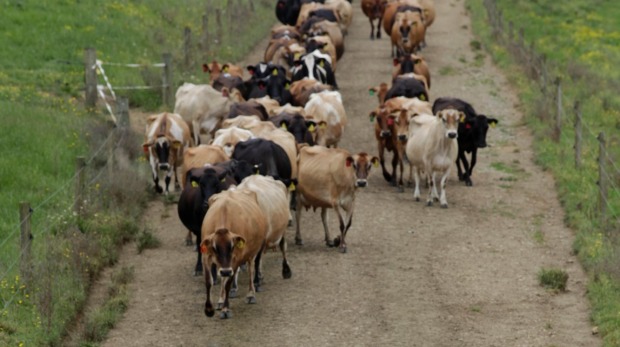Source: Stuff
Farming sustainably “comes from the heart”.
It is done because it is the natural thing to do and encompasses all parts of Southern Bell Orchards, owner Frans de Jong said after his family-run business recently won the 2015 Waikato Farm Environment Awards Supreme Award.
“You do it because you have a passion. That’s why you do it.
“That means you work on a healthy environment to begin with, you work on a better soil, healthier animals and products with a longer shelf life. In the end you get healthier people, and I think that’s really important.”
The de Jong family also won awards for soil management, harvesting, innovation and water management.
Frans said he felt “overwhelmed” upon accepting the Supreme Award.
“To get one is amazing and to get so many is even more amazing.”
When the de Jong family took over the orchard near Matamata 11 years ago, the previous owners had used a lot of sprays, he said.
“We found out very quickly that it was not the way we wanted to do things. We wanted to have a really healthy environment around the plants and create a natural environment that looks after itself – and it can be done.
“If you use the correct nutrition, and you stimulate that with micro organisms in the system, you can get a better soil and you can get healthier plants and animals.”
De Jong said the other aspect of sustainability to his business was succession. His son, Talbert, and partner, Emily Meese, have worked full time in the business since 2013 when Frans and wife, Tineke, started a 10 year succession plan and will own 50 per cent of Southern Belle’s shares within a decade. Frans and Tineke’s other child, daughter Simone works in tourism and marketing.
The 5.05ha property was bought in 2003 just before emigrating from the Netherlands. The de Jongs had never heard of feijoas prior to purchasing the property. These were being grown in the orchard, along with nashi, persimmon and blueberries. The de Jongs decided to concentrate of quality and volume and grow only feijoas in the orchard and capsicums in greenhouses.
The orchard is 3.5ha with the trees grown espalier-style for ease of management and harvest. All feijoa trees that were in the orchard when they purchased have gradually been replaced with new cultivars with a range of harvest times from mid-March through until June.
This year they anticipate producing about 20 tonnes, but in four years, when all the new trees mature, they estimate a crop of 60 tonnes. About half of their feijoas are exported.
The capsicum operation encompasses 3000 square metres of greenhouse space and includes a range of capsicum varieties. These are planted in August, harvested from early November through until early July and mostly sold on the local market. A small amount of cucumbers and chillies are also grown in the greenhouses.
The de Jongs enjoy the regular contact with customers that taking their produce to several farmers’ markets allows them. In addition to Frans, Tineke, Talbert and Emily, Southern Belle has four staff who work almost all year in the greenhouses, and up to 20 staff for the feijoa picking and pruning from March until July.
Frans worked in The Netherlands in analytical chemistry, eventually establishing, with a partner, a successful agricultural/ horticultural laboratory. He has also studied process technology.
This background and approach drove Southern Belle and is an integral part of the farm business, the Awards judges said.
Frans said it was logical to do testing.
“Measuring is knowing and I think spending a bit of money analysing something is money well spent because you’ll get it paid back 10-100 times.”
Frans had devised a greenhouse heating system which reduces their energy usage by 40 per cent and a unique closed circuit irrigation method which ensures no nutrients are being lost.
Careful and vigilant management and some biological controls introduced have significantly reduced the amount of spraying necessary.
They follow Albrecht soil fertility principles. Frans went to a Kinsey course and said he “really connected” with the concept, finding his chemistry understanding gave him a ready grasp on the topic.
“You are looking at the interactions between the nutrients in the soil. It’s about having an open mind and always trying to become better.”
Also winning big were Te Awamutu dairy farmers John Hayward and Susan O’Regan, who took out the Dairy Farm and Water Protection Awards.
“It’s something we’re really passionate about and we have worked a lot in the last three years on on riparians and wetlands,” Hayward said.
The couple milk 420 cows on a 140ha milking platform on their 245ha farm business Judge Valley Dairies. The couple had the ability to balance the drive for production and profit with environmental care, the judges said.
The property consists of 45 per cent flat, 40 per cent rolling and 15 per cent steep contour. A land use capability assessment was undertaken with the Waikato Regional Council last year. This had “been a really helpful assessment to have undertaken” providing insights that have formulated their way forward, O’Regan said.
The assessment revealed they had 123ha of cultivatable country, 34ha that should be protected from cattle and 10ha that is very prone to erosion and is best suited to planting out. As a result, John and Susan entered into a partnership with Comvita that in the next four years will see the company plant 20ha in high potency manuka, with the couple receiving a share in the resulting honey production.
The land will be retired from farming but the establishment of the manuka will mitigate erosion and reduce the overall nitrogen leaching factor on the property.
“It’s a win-win situation on land that was marginal in any event. The manuka deal turns it into land that is productive on two fronts and this use sits very comfortably with our views environmentally,” O’Regan said.
The couple have also worked closely with the council on riparian care and planting plans. In the past four years John estimates they have established about 5000 natives. A wetland covers about three hectares and a four hectare native area including a waterfall and significantly regenerating bush is stockproofed and protection by QEII National Trust covenant is being pursued.
Judge Valley Dairies is Hayward and O’Regan’s first farming venture together.Prior to setting up the operation Hayward was sharemilking in his own right and O’Regan was a barrister, practising in Te Awamutu.
Between them the couple have five children, Emily, George, Ben, Lilly, and baby Jack. The couple have a clear view on their responsibility as land users. They believe the requirement that farmers are specifically accountable for their outputs is inevitable.
“If we can set our business up sustainably, we will be on the right foot going forward and able to meet any such demands,” Hayward said.
The farm is targeting production of 215,000kg milk solids this season. The cows are managed in two herds. The friesian herd are calved in autumn and the rest the jersey herd are calved in spring. John and Susan purchased the first property of what became their business in an equity partnership in 2008.
They have since upgraded its infrastructure to include the construction of a 30-aside herringbone cowshed. In 2012 the partnership purchased the neighbouring drystock farm and integrated it into the first property. This season, John and Susan will move from equity share to full ownership.
North Waikato dairy farm owners Peter and Judi Buckley and their sharemilkers Stuart and Lichelle Morgan won the Land and Life Award, which recognises the people side of the farm business and the catchment improvement Award.
The Buckleys own Loch Carron near Te Kauwhata. This 103ha farm has a 67ha dairy platform and is situated adjacent to Whangamarino, a 7000ha area included on the Ramsar Convention’s list of ‘Wetlands of International Importance’.
The location overarches all farm management and planning. The property has a nearby 12ha runoff and is low-lying with deep peat covering about 1/5 of the farm. Utilising and maintaining four large flood pumps goes with the territory on Loch Carron. Daily vigilance and a keen eye on the weather forecast, especially for heavy rain events, are key factors in the smooth and economic operation of the farm. Most of the farm is below the water table, which is deliberately raised during each summer. This allows safe summer grazing and ensures the peat stays intact.
The Buckleys also established a 4.5ha wetland eight years ago in conjunction with a neighbouring quarry.
Buckley said they would not have been able to achieve the environmental gains on their farm without the partnerships they created with the Waikato River Authority and the quarry.
“Partnerships and achieving the environmental results we have got is huge to me and I look out there at the wetlands sitting right beside us – about 50 metres from the back door, we get a lot of enjoyment from it.”
South Waikato dairy farmers Hans and Anita Nelis were winners of the Farm Stewardship Award for their 380ha, 970 cow operation encompassing two properties at Tirau and Waotu. Three of their six children are currently sharemilking the family farms.
“There are no handouts, we give them the opportunity but we won’t give them any money.”
“Part of our commitment to sustainability is in succession planning, that is important, and we are proof it can be done, even with high debt levels,” Hans said, who also feels a strong duty to the dairy industry to support the 50:50 sharemilking concept.
The de Jongs will hold a field day at Southern Belle Orchard on May 21.



